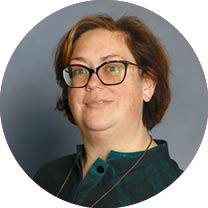Sonnenberg said it only took a few years for others to recognize her artistic talent.
One of the first large mosaics she created in 2007 for charity was a 10-foot guitar for GuitarTown Austin called “Striking Texas Gold.” The mosaic, made of stained glass, mirror, tempered glass and tile raised $55,000 for charity.
She has since created a cow for the Austin Cow Parade and 6-foot eggs that are displayed on a ranch just outside of Austin that took 14 months to create.
She said these projects have cemented her as a large-scale artist even though she started out making small flower pots.
Sonnenberg said her process for large-scale projects involves having a local company create the structure for her mosaic out of rebar, cement and fiberglass. She then affixes the glass and other materials by climbing on ladders or sliding around on a mechanic’s creeper.
For her next project, Sonnenberg was chosen by a group of jurors made up of community members to create the first public art installation in Northwest Austin.
The project is part of a citywide $720 million regional mobility bond that allocated 2% of the funds for public art.
Although the site has not been confirmed, Sonnenberg said it must be located on Anderson Mill Road between Spicewood Parkway and the southbound US 183 feeder road.
“Taking all factors into consideration, including adequate space, safety for viewers and maximum impact, the optimal location for the artwork is at the corner of Anderson Mill and Olson Road, adjacent to the playing fields at Spicewood Elementary School,” the Anderson Mill resident wrote in the proposal.
The concept for the project is a group of five large sculptural mosaics representing locally occurring seed pods—poppy, magnolia, okra, milkweed and pecan. According to the concept proposal, each pod will be installed onto a metal pole, and engineered to rotate gently in the wind.“This will reveal different sides of each pod at different times, signifying continued change,” Sonnenberg wrote in her proposal.
The materials Sonnenberg uses will ensure the installation lasts at least 20 years. The glass she has sourced is the same type of glass used in cathedrals across Europe.
“It holds up,” she said. “Those mosaics have been in existence since the Middle Ages.”
The project is expected to be completed in late 2022 or early 2023.








